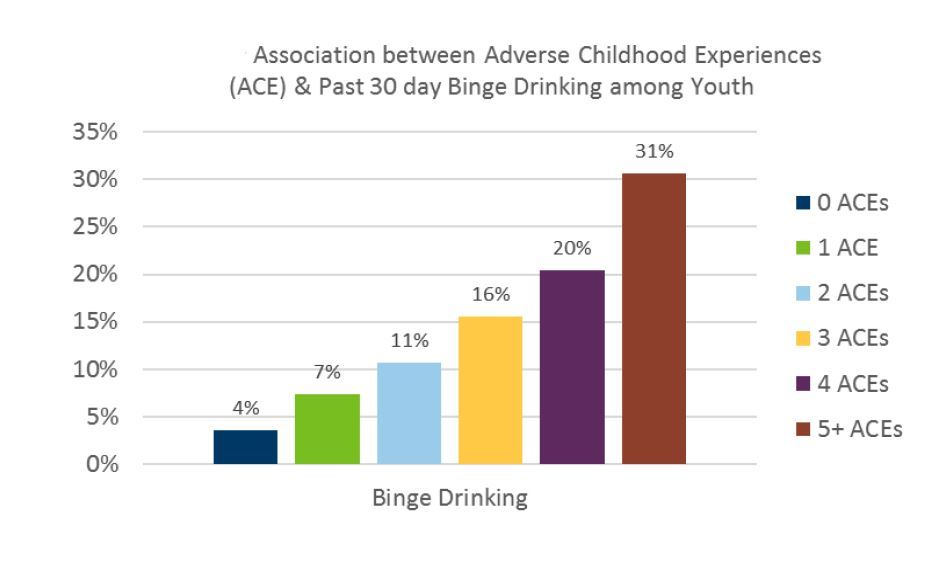Minnesota youth drinking keeps declining
Minnesota Department of Health sent this bulletin at 04/19/2018 09:06 AM CDT
Minnesota youth drinking keeps declining
Less childhood trauma helps protect teens from problem drinking
Minnesota teens continued to drink less than the teens of previous years, according to a new analysis and data brief by the Minnesota Department of Health.
Drinking among 9th grade students declined between 2013 and 2016 in all categories including early alcohol initiation, current alcohol use and binge drinking, according to analysis of data from the 2016 Minnesota Student Survey. This continues Minnesota’s seismic shift in youth alcohol use during the past 15 years. The percent of Minnesota 9th graders reporting drinking before age 13 years dropped from 30 percent in 2001 to 11 percent in 2016. Likewise, 9th graders currently using alcohol dropped from 20 percent in 2007 to 12 percent in 2016.
“Youth drinking has consequences. It’s associated with troubles later in life and a host of bad outcomes in high school, such as mental health troubles, fights, risky sexual behavior and poor academic achievement,” said Minnesota Commissioner of Health Jan Malcolm. “It’s important that kids know that contrary to public belief a majority of high school students don’t drink alcohol.”
Minnesota also has a lower youth drinking rate than the nation and surrounding states. In addition, Minnesota has racial differences, with blacks and Asians having lower alcohol use rates compared to Hispanics and whites, while American Indians have higher rates.
The research found that students with protective factors, such as an absence of childhood trauma and an adult to talk to, were significantly less likely to report problem drinking.
For example, among 11th graders, students who felt more able to talk to their mom or dad about their problems were less likely to have tried alcohol before age 13. On the other hand, young people who reported adverse childhood experiences (e.g., verbal or physical abuse, living with a parent who was an alcoholic) were significantly more likely to binge drink by consuming five or more drinks on one occasion.
“What we are seeing in our research is that building on the positive relationships and opportunities in a young person’s life help prevent alcohol use and all the risky behaviors associated with alcohol use,” said Dana Farley, Minnesota’s alcohol and drug policy prevention coordinator.
In addition to building on protective factors, Minnesota needs to create a safe environment that does not promote alcohol use among underage youth. The Community Preventive Services Task Force recommends several policies for preventing youth alcohol use such as using zoning and licensing to restrict placement of alcohol outlets near schools, parks, or other places where youth hang out and stricter enforcement of laws prohibiting sales to minors. Communities can initiate or increase compliance checks on retailers to ensure they are checking ID’s.
Media contact:
Scott Smith
Minnesota Department of Health Communications
651-201-5806
scott.smith@state.mn.us
You are subscribed to News Releases (Note to reporters: please call 651-201-4989 to get added to our media list) for Minnesota Department of Health. This information has recently been updated, and is now available.


